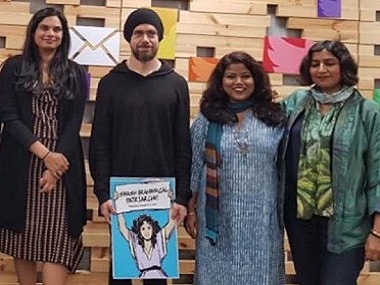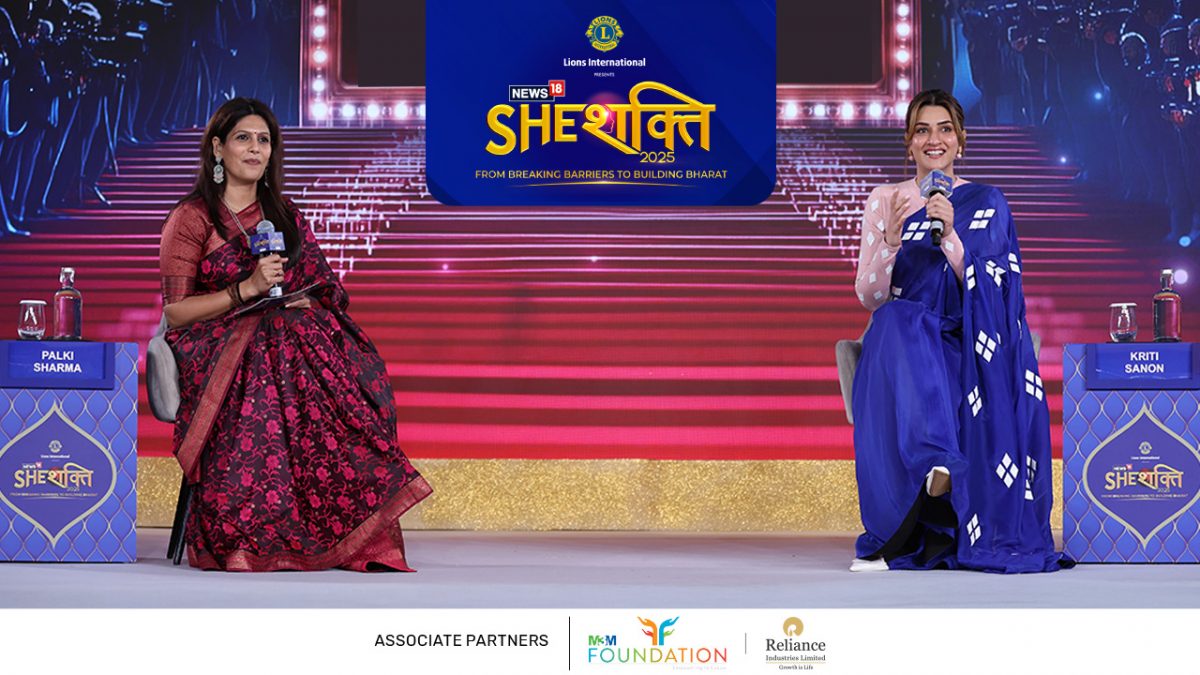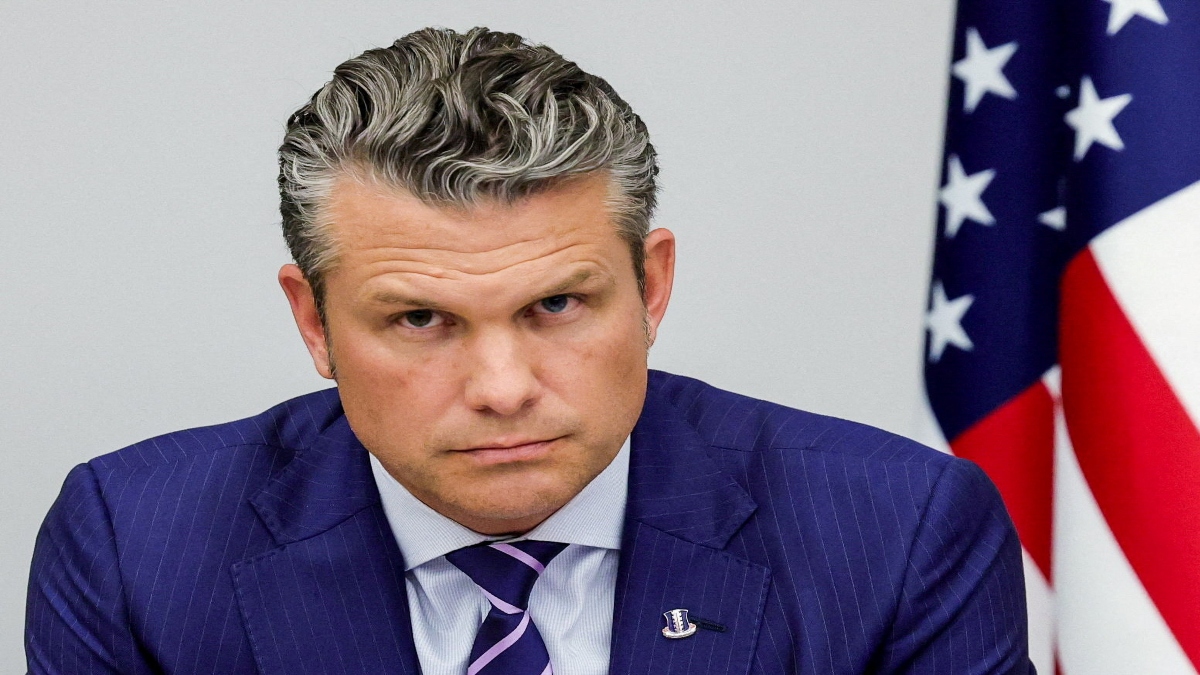Editor’s note: A photo of Twitter CEO holding a poster that read “Smash Brahminical Patriarchy” — it was presented to him by activist Sanghapali Aruna during a meeting in Delhi — stirred up strong reactions on social media. Debates over how casteim and patriarchy operated in India ensued, as did discussions over whether or not Dorsey’s posing with a poster was an example of hate speech, whether Brahmins were being targeted, and the semantics of the term Brahminical (or Brahmanical) patriarchy. In this debate, we ask the question — ‘Is Brahmanical patriarchy just a slogan?’ Arguing for the motion is New York-based data scientist Shrikanth Krishnamachary, who posits there’s little ‘intersectionality’ between the phenomenon of “Brahmanism” and an important marker of female emancipation — education. Read the counterpoint to this debate by Vasudha Katju here . *** Twitter CEO Jack Dorsey found himself in a firestorm of controversy recently after a photo of him at a Delhi event holding a placard that read “Smash Brahminical Patriarchy” went viral. The phrase “Brahminical patriarchy” triggered a huge debate. Commentator Barkha Dutt defended the use of the term with a tweet saying: “Brahmanical patriarchy is a fair and entirely mainstream phrase in the way that we now know the intersectionality of feminism and the critique of upper caste hegemony”. Read on Firstpost: 'My poster in Jack Dorsey's hands wasn't the point; real threat to trolls was me seeking safety of oppressed on Twitter' The other side accused Dorsey of hate speech, racism and singling out Brahmins. Still others tried to distinguish Brahmins, the community, from Brahmanical, which is a widely used term that defies a straightforward definition. It is used in at least three senses: 1. It may merely mean “pertaining to the Brahman varna” 2. It is sometimes used to refer to the ancient Vedic religion (pre-500 BCE) that allegedly was distinct and distinguishable from the classical Hinduism that succeeded it 3. The third usage pertains to the perceived social, economic and intellectual “dominance” of the “ritually high” upper castes in Indian society. Among the three, perhaps only the first one is hard to controvert and is straightforward enough. The other two are deeply contested. The third one is particularly problematic, as it tends to view Brahmin as a proxy for “upper castes” and also presumes that the values projected by the Brahman varna or for that matter, the “upper castes” have a wide currency in Indian society. [caption id=“attachment_5664641” align=“alignnone” width=“825”]  Twitter CEO Jack Dorsey (third from right) holds the Smash Brahminical Pariarchy poster that triggered off a row in November. Image via Twitter[/caption] “Patriarchy” is an easier word to understand. It is universal in character that typically implies a society where men hold most positions of power and women are excluded from it, for the most part, and are oppressed. Also “patriarchy” is hardly unique to India. It is a term that describes much of human history in the post-Neolithic age, with few exceptions. So the concatenation of these two terms somehow implies that “upper-caste hegemony” is a cause or perpetuator of “patriarchy” — a very problematic notion, given the universal prevalence of the latter for much of human history even in societies that lack the kind of Varna Vyavastha, which loosely translates to caste hierarchy, that characterised India. While a lot of arguments about the concatenation tend to be rhetorical, coupled with selective quotation from historical texts and scriptures to suit one’s agenda, it is worthwhile to examine recent historical data to answer the question:
Is there an objective measure that can benchmark female emancipation in pre-independence India against that of another society at a similar stage of economic development, with an altogether different culture?
One readily available measure is the female literacy rate. Consider the 1931 Census, the last such exercise in British India, which published the results segmented by caste. How does the male-female differential in education in 1931 compare with the United Kingdom in 1500? (The reason for picking the UK of 1500 is because it was also a pre-industrial society with a per-capita income similar to that of India of 1931.)
| UK Literacy : 1500 | India Literacy : 1931 | |
|---|---|---|
| Male | ~10% | 15.60% |
| Female | ~2% | 2.90% |
| Multiplier - Male Literacy % / Female Literacy % | 5 | 5.4 |
It is clear that if we compare the India of 1931 with a pre-industrial society like the UK of 1500, the ratio of male literacy rate to female is roughly the same. Based on these numbers, there is little ground for the supposition that “Indian culture” somehow was more inimical to educating women as compared to other agrarian cultures. Now let us examine the numbers by caste in 1931. Is there any “intersectionality” at all between the much critiqued phenomenon of “Brahmanism” and female education? Interestingly, we see that the “multiplier” as defined in the above table is in fact lower for the Brahmin varna as compared to the all-India average.
| Literacy rates | |
|---|---|
| Female | |
| India : Overall | 2.90% |
| Brahmins | 9.60% |
Next, let us look at the multiplier of specific castes, and rank order them from “best” to “worst” — with a lower multiplier signalling more equitable educational attainment. This is not an exhaustive list. We see that several Brahmin castes rank very high, with low multipliers relative to the general population. In contrast, communities with “high” multipliers include some Brahmin groups like those in the United Provinces and Rajputana, as well as non-Brahmin castes like the Lingayats, and Vokkaligas, which we don’t usually regard as being “Brahmanical”.
| Literacy rates | |
|---|---|
| Female | |
| Baidya: Bengal | 47.60% |
| Nairs: Travancore/Cochin/Madras | 27.60% |
| Brahman: Mysore | 34.40% |
| Kayastha: Bengal | 20.90% |
| Brahman: Baroda | 28.40% |
| Brahman: Madras | 28.60% |
| Brahman: Bengal | 21.60% |
| Brahman: Bombay | 23.10% |
| Kayastha: United Provinces | 19.10% |
| Khatri: Punjab | 11.40% |
| Chetti: Madras | 9.70% |
| Lohana: Bombay | 7.40% |
| Brahman: Punjab | 3.40% |
| Maratha: Bombay | 2.80% |
| Jat: United Provinces | 0.80% |
| Brahman: United Provinces | 2.50% |
| Brahman: Bihar / Orissa | 2.80% |
| Lingayat: Mysore | 2.20% |
| Baniya: Punjab | 3.40% |
| Brahman: Rajputana | 1.40% |
| Mala: Madras | 0.10% |
| Ahir: United Provinces | 0.10% |
| Kuruba: Mysore | 0.30% |
| Vokkaliga: Mysore | 0.50% |
There are two key takeaways from this study: 1. There is hardly a strong correlation between “caste status” and the degree of “male advantage” in education. The ratio of male to female literacy rates for India is hardly exceptional and quite comparable to that of other pre-industrial societies in history. 2. Second, while the “male advantage” varied greatly across geographies and caste, it has little to do with “Brahmanism” or the degree of “sanskritisation” of castes. In fact, several “upper castes” have very favourable (i.e. low) multipliers relative to national average. Also read: What really happened at the meeting with Twitter's Jack Dorsey — An open chat, not a planned attack on Brahmins This also raises serious questions on the wisdom of asserting the “intersection” of caste and gender-oppression and creating grand narratives linking patriarchy and “upper caste” hegemony. Such narratives may serve political ends but are far removed from our historical understanding. Shrikanth Krishnamachary is a data scientist in financial services based in New York. He tweets @shrikanth_krish


)

)
)
)
)
)
)
)
)



